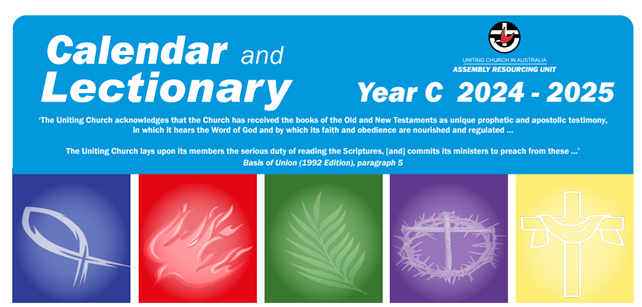
Public Bible reading: The Revised Common Lectionary
Public Bible readings invite people to reflect on the Old Testament, Psalms, Gospels and Epistles. The Revised Common Lectionary is used by the Uniting Church.
Sometimes people asked me the name of my favourite Gospel. It’s Luke. My favourite prophet is Jeremiah. I love the Psalms. My favourite Epistle is Philippians – the Epistle of Joy. As a Minister who has the privilege of preaching to the flock, it would be very easy for me to focus on Luke, Jeremiah, the Psalms, and Philippians. But they are only 4/66 of the Bible: just 6% of the Old and New Testaments!
Our Jewish forebears saw the Pentateuch, the first five books of the Old Testament, as the Word of God. They divided it up into fifty-four “portions” which were read at the synagogue every Sabbath in an annual cycle, beginning and ending shortly after the Jewish New Year. That may have begun when they were in exile in Babylon in 500 BC. When Christianity separated from Judaism in the first century AD, the Church followed a similar pattern. On Sundays – the Lord’s Day – they would have an Old Testament reading, chant a Psalm, and have a New Testament reading.
Public Bible readings were absolutely vital to the life of the infant Church. Gary S. Shogren, Professor of New Testament, Seminario ESEPA, San Jose, Costa Rica has written a fascinating article called “The Public Reading of Scripture in the Early Church [and] in the Church of Today”. He states that a few as 10 or 15% of the Christian believers at Philippi or Ephesus or Rome were literate. As late as the 1820 only 12% of the global population could read. So, Public reading of the Scriptures was vital.
Over almost 2,000 years the Church has developed a system called The Lectionary. That is a selection of readings from both Testaments which are used in public worship. These readings conform to the Church Calendar i.e. the Seasons of Advent, Christmas, Epiphany, Lent, Easter, and Pentecost. By 1988 the Uniting Church was using the “(Revised) Common Lectionary”, consisting of an Old Testament reading, a Psalm, a Gospel reading, and a reading from another part of the New Testament. The Gospel readings are in a 3-year cycle: Year A = Matthew; Year B = Mark; Year C = Luke. Selections from John’s gospel are interspersed. So, we are now in the Season of Lent in Year C. During Lent all of our Gospel readings will come from Luke.
Late last year Central Coast South UCA decided to use a Lectionary-based resource called “Liturgy, Learning and (purposeful) Life” (LLL). This provides information for every Sunday and special days e.g. Readings, Prayers, Blessings, Music suggestions, etc. In February the Friday Family Church began using this resource. The LLL resource focuses on a reading and states a theme. In Lent the theme is “The Wilderness”. The first 5 Sundays in Lent all focus on a reading from Luke, with the following themes: Finding Clarity in the Wilderness (9th March), Fear in the Wilderness (16th March), Thirsty in the Wilderness (23rd March), Lost in the Wilderness (Combined service on 30th March), and Finding a Way in the Wilderness (Lent 5; 6th April).
Last week I mentioned some Daily Devotionals which I have found helpful. Thank you to those who have emailed me and told me what they use. You will receive a list in coming weeks.
As our Lenten journey continues, may we continue to journey through the Lectionary. That way we can discover the truth of the words in Psalm 119:103 – “How sweet are your words to my taste, sweeter than honey to my mouth!”
With hope and joy,
Rev. Frank (Van Der Korput), Supply Minister